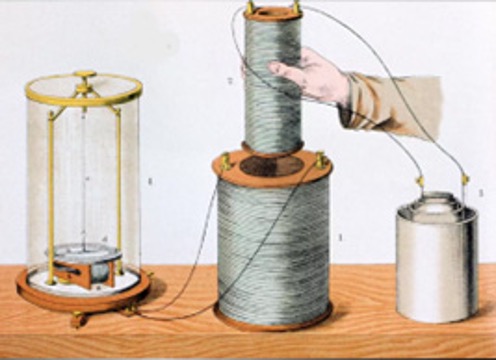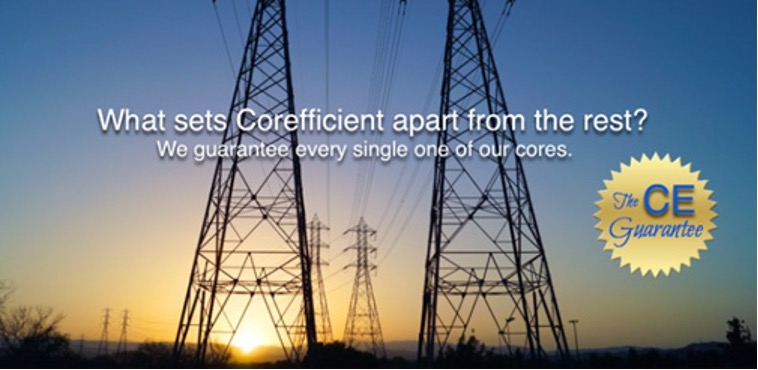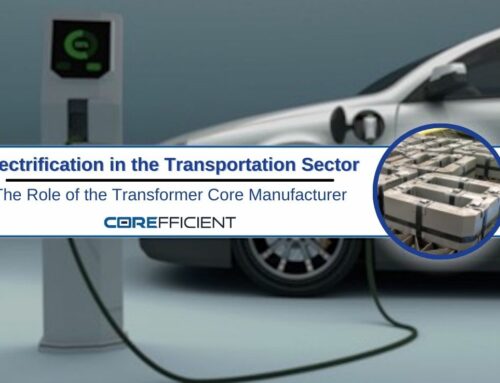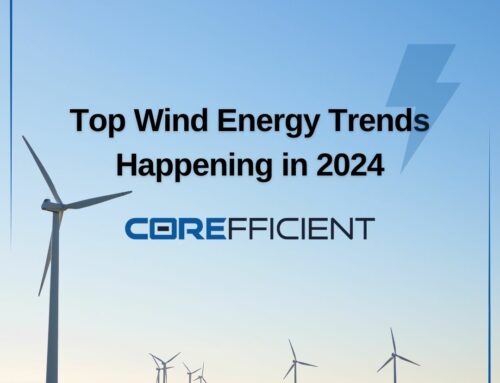
Welcome to the Corefficient Energy Trailblazers Series, where we celebrate the pioneers and innovators who have shaped the field of energy and electricity. Throughout this series, we’ll delve into the accomplishments and life stories of some of the most prominent figures in the realm of power. We will examine how their innovations and breakthroughs have played a part in advancing the development of energy-efficient transformer cores.
Hans Christian Ørsted
This post will focus on Hans Christian Ørsted, a Danish physicist and chemist who made a groundbreaking discovery in electromagnetism. In 1820, he conducted an experiment where he observed that an electric current flowing through a wire deflected a compass needle.
This discovery became a significant milestone in the field of electromagnetism, for it showed that electricity and magnetism are related phenomena. It also revealed that electric currents can create magnetic fields. Ørsted’s discovery was the first step towards developing the electromagnetic theory that explains how electric and magnetic forces interact. Furthermore, energy-efficient transformer cores operate based off of this theory.
Life and Education of Hans Christian Ørsted
Ørsted was born in 1777 in Rudkøbing, Denmark and was interested in science from an early age. Then, he studied at the University of Copenhagen, where he later became a professor of physics. He was also interested in acoustics, which led to his invention of the “electric ear” to amplify sound using an electric current. Additionally, piperine, one of the pepper components, was discovered by Ørsted for its medicinal properties. He isolated it from black pepper seeds and named it after Piper nigrum.
Hans Christian Ørsted prepared metallic aluminum for the first time in 1825 by electrolyzing molten salt. This was an essential contribution to chemistry, as aluminum is lightweight and versatile. Next, he founded a society for spreading scientific knowledge among the public in 1824. In fact, the society still exists today as the Ørsted Society, and it awards an annual prize for outstanding contributions by Danish physical scientists.

Ørsted Image Attribution: https://en.wikipedia.org/wiki/Hans_Christian_%C3%98rsted#/media/File:Hans_Christian_%C3%98rsted_daguerreotype.jpg
Experiment Image Attribution: https://www.scienzainrete.it/articolo/oersted-1820-c-del-nuovo-danimarca/marco-taddia/2020-11-25
Electromagnetic Revelation: Ørsted’s Contribution to Energy-Efficient Transformer Cores
Ørsted conducted his most famous experiment on electricity and magnetism. Alessandro Volta’s creation of the electric battery in 1800 inspired him. Ørsted wanted to test if electricity could produce heat or light, and he set up a simple circuit with a battery, a wire, and a compass. When he switched on the battery, he noticed the compass needle moving away from its usual north-south direction. He realized that the electric current in the wire created a magnetic field around it, affecting the compass.
Ørsted repeated the experiment with different cables and batteries. This led to his finding that the magnetic field’s direction and strength depended on the electric current’s path and intensity. Later in 1820, he wrote a paper called “Experimenta circa effectum conflictus electrici in acum magneticam” (Experiments on the effect of electric conflict on a magnetic needle) where he presented this experiment’s results.
Understanding the Nature of Electricity and Magnetism
Ørsted’s experiment was a breakthrough in understanding the nature of electricity and magnetism. It demonstrated that these two forces were not distinct but interrelated and could transform into one another. New possibilities resulted for generating and transmitting electric power and developing new devices and applications. Ørsted’s discovery also inspired other scientists, such as Michael Faraday and James Clerk Maxwell, who further developed the theory and practice of electromagnetism.

Image Attribution: https://www.thoughtco.com/history-of-electromagnetism-1991597
One of the applications of electromagnetism is the transformer. This device can change the voltage and current of an electric power supply. Transformers are essential for efficient and safe electricity distribution. They can step up or down the voltage to suit the needs of different devices and locations.
In transformers, two or more wire coils are wound around a core, typically made of iron or steel. These coils are known as primary and secondary windings. When the primary winding carries an alternating current, it generates a magnetic field that induces a current in the secondary winding. The proportion of turns in the primary and secondary windings determines the voltage and current balance in the output.
The Critical Role of Energy-Efficient Transformer Cores
Various industries and sectors widely use transformers, including power generation, transmission and distribution, lighting, electronics, telecommunications, and transportation. Using energy-efficient transformer cores designed to minimize magnetic losses can reduce these drawbacks and improve the performance and reliability of transformers.
Manufacturers produce energy-efficient transformer cores using high-quality materials. Examples include grain-oriented electrical steel (GOES), amorphous metal, or nanocrystalline metal with low hysteresis and eddy current losses. These materials have a high permeability, meaning they can easily magnetize and demagnetize in response to the alternating current. Therefore, this reduces the energy wasted as heat and noise and increases the efficiency and lifespan of transformers.
Corefficient: Innovating Energy-Efficient Cores Inspired by Ørsted’s Legacy
Corefficient is a company that prides itself on being at the forefront of energy efficiency innovations in the electrical transformer industry. Their team of transformer core experts takes inspiration from the energy inventions of trailblazers like Hans Christian Ørsted, who laid the foundation of electric motors through his experiments with electromagnetism.

Corefficient prioritizes energy efficiency in their transformer core designs by utilizing advanced materials and technologies to enhance performance and reduce energy consumption. With optimal performance across a range of industries, their energy-efficient cores extend the transformer’s lifespan and minimize maintenance expenses. Leaders in the energy-efficient transformer core market, Corefficient is known for its dedication to sustainability and innovation.
About Corefficient: Leading Sustainable
Nestled in Monterrey, Mexico, Corefficient stands at the forefront of transformer core manufacturing, dedicated to enhancing the value of its products. With a rich background in transformer core engineering and design, and a deep knowledge of materials like hot and cold rolled steel, grain-oriented steel, and electrical steel, Corefficient excels. Their commitment to exceptional customer service has cemented their status as a reputable leader in the production of energy-efficient transformer cores.
Explore Corefficient’s offerings at corefficientsrl.com, reach out to our North American sales engineer at 1 (704) 236-2510, or get in touch with our Monterrey office at (81) 2088-4000.
About Parent Company Kloeckner Metals Corporation:
Corefficient, based in Monterrey, Mexico, is a top-tier designer and manufacturer of energy-efficient electrical cores for transformers. Back in August 2023, Kloeckner Metals acquired Corefficient as a part of Kloeckner’s plan to expand its presence in the North American market.
Kloeckner is North America’s top steel service company, with 45 branches across the USA and Mexico, KMC has 2,100 employees dedicated to providing customers with the latest processing and fabrication technologies. As a subsidiary of Klöckner & Co, KMC is based in Roswell, Georgia, and specializes in distributing steel and metal products. In the fiscal year 2021, the company achieved sales of USD 4.1 billion. At KMC, they’re always striving to develop innovative supply chain solutions that meet the unique needs of their customers.





